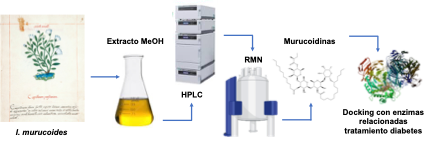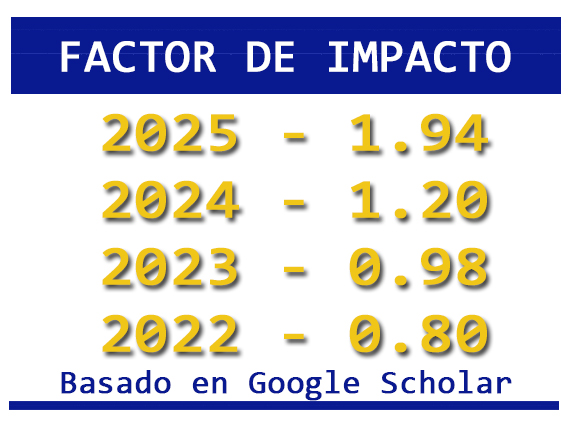The genus Ipomoea; from pre-Hispanic times to the present.
DOI:
https://doi.org/10.36790/epistemus.v19i38.396Keywords:
Ipomoea, endemic, medicinal, alkaloids, glycolipidsAbstract
Pre-Hispanic societies developed a great knowledge of their environment which allowed them to prosper. They considered illness as a bodily imbalance caused by celestial or underworld beings and used medicinal plants to restore balance and seek a divine identity. Among these plants, those of the Ipomoea genus of the Convolvulaceae family stood out for their food, medicinal and religious ritual uses, being fundamental to pre-Hispanic cultures. Nowadays, secondary metabolites from plants of the Ipomoea genus are studied for their biological properties with great potential in modern medicine, including antimicrobial, antifungal, anticancer and hypoglycemic activities. This underlines its importance for the treatment of chronic-degenerative and high-incidence diseases, such as diabetes and cancer, that affect Mexican society.
Downloads
References
R. E. Schultes and A Hofmann. Plantas de los Dioses. Las fuerzas mágicas de las plantas alucinógenas. Fondo de Cultura Económica, México, 1979. https://www.fondodeculturaeconomica.com/Ficha/9789681663032/F.
R. Pereda-Miranda, D. Rosas-Ramírez and J. Castañeda-Gómez. Resin Glycosides from the Morning Glory Family. In: Kinghorn D, Falk H, Kobayashi J (eds.) Progress in the Chemistry of Organic Natural Products. Springer: New York, 2010, vol. 92, pp. 77-152. https://link.springer.com/chapter/10.1007/978-3-211-99661-4_2.
F. Hernández. Historia de las plantas de la Nueva España. In: Obras Completas. UNAM. Imprenta Universitaria. México D.F. 1959, vol. 2, pp. 227-229. http://www.ibiologia.unam.mx/plantasnuevaespana/index.html.
D. Rosas-Ramírez, “Estudio de las resinas glicosídicas de tres variedades del camote (Ipomoea batatas)”, Dr.C. thesis, Departamento de Farmacia, Facultad de Química. Universidad Nacional Autónoma de México, México, 2012. https://repositorio.unam.mx/contenidos/87678.
D. Rosas-Ramírez and R. Pereda-Miranda, “Batatins VIII-XI, glycolipid ester-type dimers from Ipomoea batatas”, Journal of Natural Products, 2015, vol. 23, pp. 26-33. https://pubs.acs.org/doi/10.1021/np500523w.
A. Stoll and A. Hofmann, “Charper 21 The ergot alkaloids”, In: R.H.F. Manske (ed.), The Alkaloids. vol. 8, Academic Press, New York, 1965, pp. 725-783. https://doi.org/10.1016/S1876-0813(08)60060-3.
J. M. Chao and A. Der Maderosian, “Identification of ergoline alkaloids in the genus Argyeia and related genera and their chemotaxonomic implications in the Convolvulaceae”, Phytochemistry, 1973, 12, 2435-2440. https://doi.org/10.1016/0031-9422(73)80451-0.
L. Chérigo, R. Pereda-Miranda and S. Gibbons, “Bacterial Resistance Modifying Tetrasaccharide Agents from Ipomoea murucoides”, Phytochemestry, 2009, vol. 70, pp. 222–227. https://doi.org/10.1016/j.phytochem.2008.12.005.
D. Rosas-Ramírez, R. Pereda-Miranda, S. Escandón-Rivera and R. Arreguín-Espinosa, “Identification of a-Glucosidase Inhibitors from Ipomoea alba by Affinity-Directed Fractionation-Mass Spectrometry”, Brazilian Journal of Pharmacognosy, 2020, vol. 30, pp. 336–345. https://doi.org/10.1007/s43450-020-00068-8.
D. Rosas-Ramírez, R. Arreguín–Espinosa, S. Escandón–Rivera, A. Andrade–Cetto, G. Mata–Torres and R. Pérez–Solís, “Identification of Hypoglycemic Glycolipids from Ipomoea murucoides by Affinity-Directed Fractionation, In Vitro, In Silico and Dynamic Light Scattering Analysis”, Plants, ,2024, vol 13, p. 644. https://doi.org/10.3390/plants13050644.
https://doi.org/10.1007/s43450-020-00068-8.
D. Rosas-Ramírez, R. Arreguín–Espinosa, S. Escandón–Rivera, A. Andrade–Cetto, G. Mata–Torres and R. Pérez–Solís, “Identification of Hypoglycemic Glycolipids from Ipomoea murucoides by Affinity-Directed Fractionation, In Vitro, In Silico and Dynamic Light Scattering Analysis”, Plants, ,2024, vol 13, p. 644. https://doi.org/10.3390/plants13050644.

Downloads
Published
How to Cite
Issue
Section
License
Copyright (c) 2025 EPISTEMUS

This work is licensed under a Creative Commons Attribution-NonCommercial-ShareAlike 4.0 International License.
The magazine acquires the patrimonial rights of the articles only for diffusion without any purpose of profit, without diminishing the own rights of authorship.
The authors are the legitimate owners of the intellectual property rights of their respective articles, and in such quality, by sending their texts they express their desire to collaborate with the Epistemus Magazine, published biannually by the University of Sonora.
Therefore, freely, voluntarily and free of charge, once accepted the article for publication, they give their rights to the University of Sonora for the University of Sonora to edit, publish, distribute and make available through intranets, Internet or CD said work, without any limitation of form or time, as long as it is non-profit and with the express obligation to respect and mention the credit that corresponds to the authors in any use that is made of it.
It is understood that this authorization is not an assignment or transmission of any of your economic rights in favor of the said institution. The University of Sonora guarantees the right to reproduce the contribution by any means in which you are the author, subject to the credit being granted corresponding to the original publication of the contribution in Epistemus.
Unless otherwise indicated, all the contents of the electronic edition are distributed under a license for use and Creative Commons — Attribution-NonCommercial-ShareAlike 4.0 International — (CC BY-NC-SA 4.0) You can consult here the informative version and the legal text of the license. This circumstance must be expressly stated in this way when necessary.
The names and email addresses entered in this journal will be used exclusively for the purposes established in it and will not be provided to third parties or for their use for other purposes.














